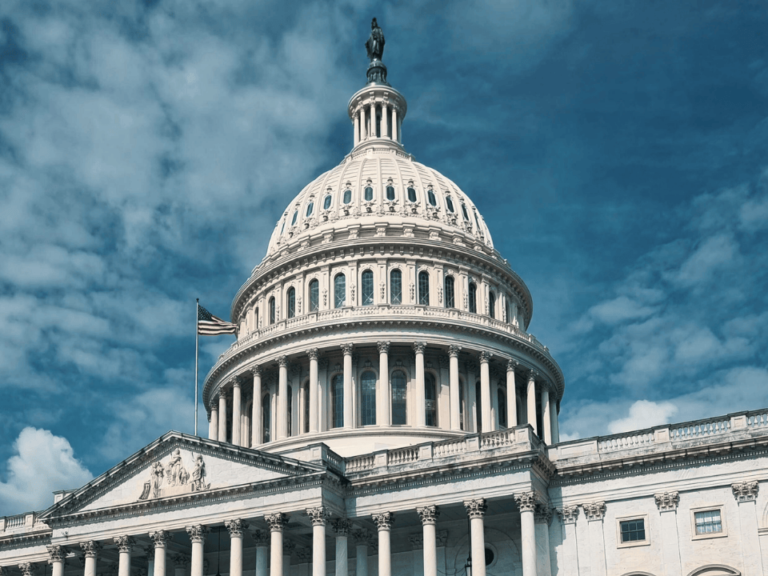As we come within a stone’s throw of Nov. 5, we can’t help but wonder if and how the election outcome will impact health care policy, and cancer policy in particular.
Although health care has not been a central issue in the 2024 presidential campaign, the election’s outcome has the potential to affect a wide range of health policies.
Paying attention is important; these policies will have direct impact on further consolidation of health care, access, investments in innovation, and how we deliver care to the patients we serve.
Trump and Harris have philosophical differences on several broad health policy areas, ranging from reproductive health to prescription drug costs. They also likely have several areas of (surprising) agreement.
Right now, the two candidates are neck and neck in the polls, and the polls are not even always reliable, particularly at the national level. Last-minute developments which can carry an outsized influence on public perception of a candidate, a phenomenon termed the “October surprise,” can also carry some sway. Just two short weeks into October, we have had not one, but two once-in-a-lifetime hurricanes devastate our southeastern states, and a (quickly resolved) port strike which could have had substantial implications on our economy.
All this to say that with just a few weeks until the election, the outcome feels really unknowable.
A further caveat is that it matters what the win looks like—whether a candidate is able to execute a total sweep of both the executive branch and the legislative branch, or whether we will see a divided victory.
In recent years, our hyper-partisan political environment has engendered slim majorities that have necessitated coalition governments—and consensus and compromise has been more limited.
We practicing oncologists need to understand what implications the election might have on our ability to care for patients, and how our political landscape will alter the environment for the patients we serve.
At face value, it is not the easiest task to compare the candidates on a range of issues. For example, how can we think about how Trump might approach the Affordable Care Act (ACA)? He has not clearly articulated a health policy agenda, and the modern GOP has evolved in a much more populist direction than it stood even four years ago.
This has important implications—for example, during his four years in the White House, Trump sought to contract the reach of ACA in multiple ways.
When a full systematic overthrow was unsuccessful, the administration worked to limit it through shortening enrollment windows, minimizing the advertisement budget, approved work requirements for Medicaid enrollees etc.
And yet, the Republican party might approach the ACA differently this time around.
For example, premium subsidies that allow lower-income citizens to purchase ACA plans are set to expire in 2025—and with many Americans in ‘red states’ being the beneficiaries of these subsidies, it is likely that a Republican-controlled Congress would actually work to extend those credits.
In contrast, Vice President Harris will likely support expansion of the ACA, as historically she has supported efforts for universal coverage.
We would note that the ACA has had both positive and negative consequences to the health care ecosystem. An example of the latter: since the passage of the ACA, we have seen growth in hospital consolidation and substantial growth of contract pharmacy relationships with 340b hospitals—largely served by the major pharmacy benefit managers—and an increase in drug prices and the total cost of care outpacing inflation.
Where do the candidates differ most strongly?
One area is in their likely respective approaches to the issue of drug pricing and affordability.
In cancer care in particular, patients are regularly confronted with rising prescription costs, and as a consequence, prior authorization and step therapy requirements has been put in place by insurers.
As these insurance policies can often be influenced by rebate structure and arbitrage opportunity, the opaque nature of these transactions limits the opportunity to understand how much they are contributing to increases in the cost of care.
Based on how his administration tried to address the issue in his prior term, former President Trump will likely push for increased price transparency, and greater choice and competition to control drug prices.
He previously championed novel procurement pathways such as importation from other countries, and tried to peg Medicare Part B reimbursements to lower prices charged in similar countries through his Most Favored Nation program.
This was challenged in court and later rescinded by the Biden administration.
Vice President Harris is likely to continue to champion the price control provisions of the Inflation Reduction Act—which included capped out-of-pocket costs for Medicare and MA patients, and required Medicare to begin negotiating drug prices, but also created new rebate structures to maintain prescription drug plan solvency.
Although health care has not been a central issue in the 2024 presidential campaign, the election’s outcome has the potential to affect a wide range of health policies. Paying attention is important; these policies will have direct impact on further consolidation of health care, access, investments in innovation, and how we deliver care to the patients we serve.
The vice president has already proposed expanding these provisions to all Americans and accelerating Medicare drug price negotiations via more drugs negotiated with smaller windows of exclusivity.
One area in which either administration will likely take action, is pharmacy benefit manager reform, with respect to services provided to health insurance plans.
Though once an obscure component of the drug supply chain, there is increasing awareness of the fact that PBMs, through their use of manufacturer rebates, spread pricing, and conflict of interests through ownership of specialty pharmacies, are directly causing drug list prices to rise.
An ambitious reform would be to pursue something akin to the Glass-Steagall Act of 1933, which separated commercial banking from investment banking—the analogy being disallowing a formulary-setting entity to own and operate a dispensing specialty pharmacy.
However, such an outcome may be out of reach. A more realistic reform outcome that would garner bipartisan support is increased pricing transparency—where a PBM would report to the plan sponsor the full list of covered drugs and total net spending by the health plan on prescription drugs, as well as remit to the plan all rebates, fees, and other discounts—effectively prohibiting spread pricing.
If PBM transparency legislation were to pass, it would likely shed light on some of the drivers of increased costs and inform further appropriate policy.
Neither candidate has staked out a strong position on several issues that are important to oncologists—including a formal position on Medicare reimbursement for physicians—who are facing further cuts to the ASP add-on percentage.
The natural consequences of declining reimbursement in the proposed fee schedule manifests as network inadequacy (some community oncologists may be unable to remain solvent) and relatedly, further consolidation.
Neither candidate has shared any plans to address other drivers of increasing healthcare costs in the pharmacy ecosystem, such as the unprecedented expansion in the disproportionate share hospital growth of 340B drug pricing program through contract pharmacy relationships and their PBM partners.
Other notable policies that could impact care in the short term are diminishing investments in cancer research as noted by proposals to cut NIH funding by both Biden and Trump, telehealth abilities that are set to expire if not renewed, penalties in effectuation in the IRA, and the inability for oncologists to ship oral therapies to patients from medically integrated dispensing pharmacies, though HR5526 sits awaiting consideration from the Senate.
Other ways the administration will influence healthcare will be in appointments, as federal agency leaders often influence broad policy implementation. This is especially true for the Food and Drug Administration, an agency that plays a pivotal role in supporting the rapid development of high-quality innovative drugs and management of supply chain shortfalls.
We are really fortunate as oncologists to live in an era of remarkable pharmaceutical innovation, but this is paired with an aging population and high societal medical expense.
We have an unprecedented ability to control cancer’s ability to take life, and cancer therapy’s ability to limit livelihood. But this privilege will be put at risk without responsible health policy.
As these policies are increasingly complex, it has never been more important for individuals in the cancer ecosystem to educate our leaders and advocate for responsible choices that will continue to drive research, innovation, and access to improve cancer care.











